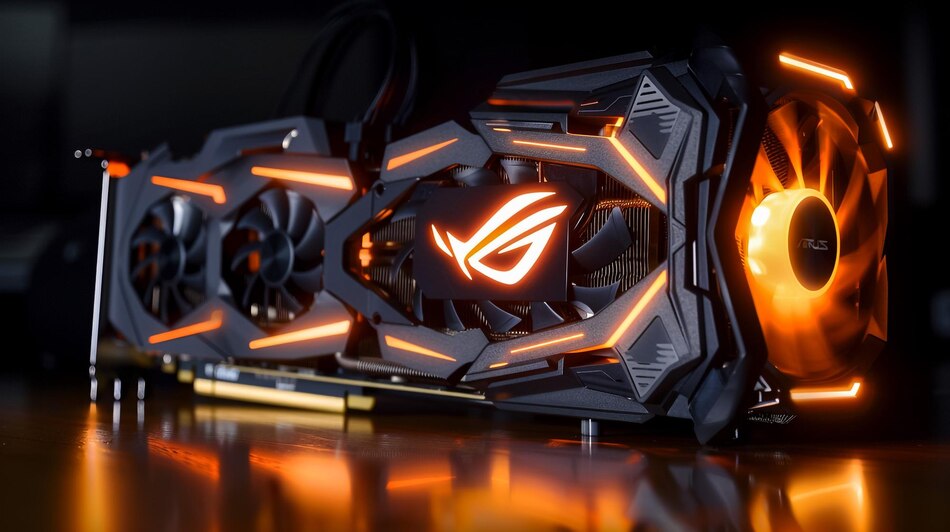As game technology improves the need for fast graphics processing units GPUs has gone through the roof. For a smooth game experience it is essential that a GPU can display complex images in real time. Of course with great power comes excellent duty. For GPUs that task is to handle heat. In this post we will discuss GPU temperatures in detail looking at the best temperature range for games and how to maintain it.
Learning About GPU Temperatures
Before we discuss the best temperatures for gaming GPUs let consider why temperature is important. A GPU is made up of billions of transistors that turn on and off very quickly which causes heat. Thermal slowdown occurs when the GPU slows down to protect itself from damage. If the heat isn’t handled properly it may cause lasting damage to the GPU.
Factors Influencing GPU Temperature
- Workload: The GPU works harder and makes more heat when you play very graphically intensive games.
- Cooling System: The temperature is affected by how well the GPU cooling system works which includes fans, heat sinks and liquid cooling options.
- Airflow: How well the GPU can remove heat depends on how well the case moves air.
- Ambient Temperature: The temperature of the room where you’re playing games can also change the temperature of the GPU.
Which GPU Temperature Is Best For Gaming
The GPU should be between 65C and 85C for best game performance when it is under load. However this can differ based on the GPU make and type and the manufacturer instructions. Most current GPUs are made to work in temperatures up to 100C but using them at those temperatures all the time can shorten their life.
Temperature Range And Performance
Okay let go over the temperature ranges and what they mean for your GPU work;
- 30C to 50C: Light or idle use like reading the web or changing documents.
- 50C to 65C: Moderate use such as light games or graphic design.
- 65C to 85C: is the best temperature range for heavy games or rendering images.
- 85C to 95C: This is a higher risk zone where heat slowdown may occur.
- 95C or higher: This is dangerous land where long lasting damage is more likely.
Properly Keeping GPU Temperatures
Maintaining a suitable GPU temperature is essential for making sure that your hardware works well and lasts a long time. If you want to keep your GPU cool during those long game sessions try these tips
Effective Ways To Cool Down
One of the best ways to keep GPU temperatures under control is to buy a solid cooling system. Here are some options: switching to a better air cooler, adding more case fans or choosing a liquid cooling system.
Improving Airflow
The case needs to have good airflow for heat to escape. Make sure that air can flow freely in and out of your case and think about where you put your parts so they don’t get in the way.
Performing Regular Maintenance
When dust builds up it can trap heat and make your cooling systems work less efficiently. Cleaning the fans and heatsinks inside your computer regularly can help keep the temperature just right.
Excellent Thermal Paste
Adding thermal paste to the area between the GPU and its cooler improves its ability to move heat. However thermal paste can dry out and stop working over time so replacing it with new high quality paste can significantly lower GPU temperatures.
Monitor And Test GPU Temperatures
It is essential to monitor your GPU temperature. Several software programs can provide real time weather information. Tools like FurMark or 3DMark can also help you determine how well your GPU works when it is under a lot of stress.
Monitoring Software Tools
- MSI Afterburner
- HWMonitor
- GPU Z
Analysing Test Results
When you do stress tests look for problems with stability glitches or sudden drops in performance. These can be signs that the system is getting too hot. Check to see if your temperatures are safe by comparing your results to what your GPU type should be able to do.
Conclusion
Keeping your GPU at the right temperature is essential for gaming performance and hardware life. For best game performance a GPU should be between 65C and 85C under load. However this can change based on the GPU type and manufacturer instructions.
It is essential to know what affects GPU temperature such as the amount of work being done, how well the cooling system works, the flow of air and the room temperature. It is also essential to use software like MSI Afterburner HWMonitor or GPU Z to keep an eye on your GPU temperatures and to stress test it every so often to make sure it stays stable and works well when it is under a lot of stress.
To keep temperatures at the right level you should buy good cooling solutions to ensure air flows well inside your case, perform regular maintenance to remove dust buildup and maybe even redo thermal paste every so often. If your GPU always runs at temperatures above 85C you should improve cooling or airflow to keep your hardware from being slowed down by heat.
